Site Information: Andrew’s habitat in Kenton has full to part sun conditions
What inspired you to enroll in the Backyard Habitat Certification Program?
I have been passionate about sustainability for quite some time. In college, I was my university’s sustainability director, and then after college, I worked as a sustainability consultant in the construction industry for a few years. The Backyard Habitat program was a chance for me to apply what I was learning and working on at a personal level and I have really enjoyed transforming our yard into a much more productive space.
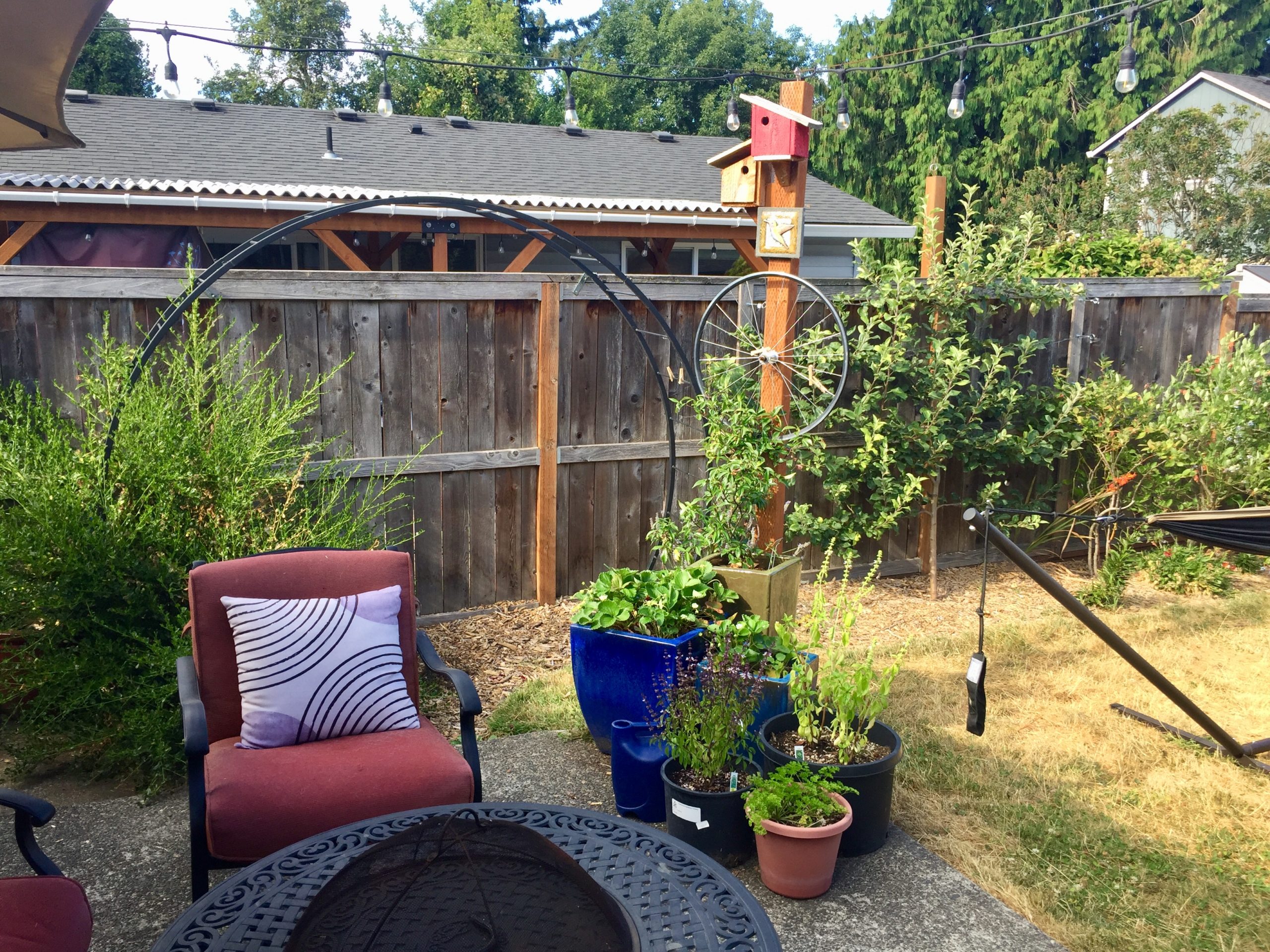
How would you describe your habitat?
I’m very interested in and excited about pollinators, so I chose to try to turn our yard into a pollinator friendly, meadow-ish space. Our front yard has seen the biggest transformation. When we first moved in it was all grass, minus the cherry tree. It is now almost entirely flowering plants. The front yard has two main flower zones, one along our front window, and one along the longer part of our fence. At this time, we have something in blossom from February through November. Under our cherry tree, we’ve planted lots of native ground cover and ferns. I love salal so am trying to get that to really take over. We’ve added a plum tree and I replaced a large portion of the front yard with a stone and river rock pathway that steers you to both of our flowering areas. Grasses, sedges, and some wild strawberry fill in the open space between the flowers. Our backyard hasn’t changed a ton, but we have added a few features. Our downspouts have been disconnected and I built a rain garden with leftover rock from building the pathway in the front yard. The rain garden is planted with a mix of echinacea, native aster and native spirea, and then some spreading rush will fill in the gaps. The water that runs into the garden is the overflow from a rain barrel that we use to supplement the watering of the herbs we keep on our back patio. We removed a few existing plants upon moving in and replaced those with fruit trees and bushes and then we have a small vegetable garden off the back of our house. We do a chip drop every year around our plants. All throughout our yard I have built a number of birdhouses and we love seeing the chickadees move into both the front and backyard each year.
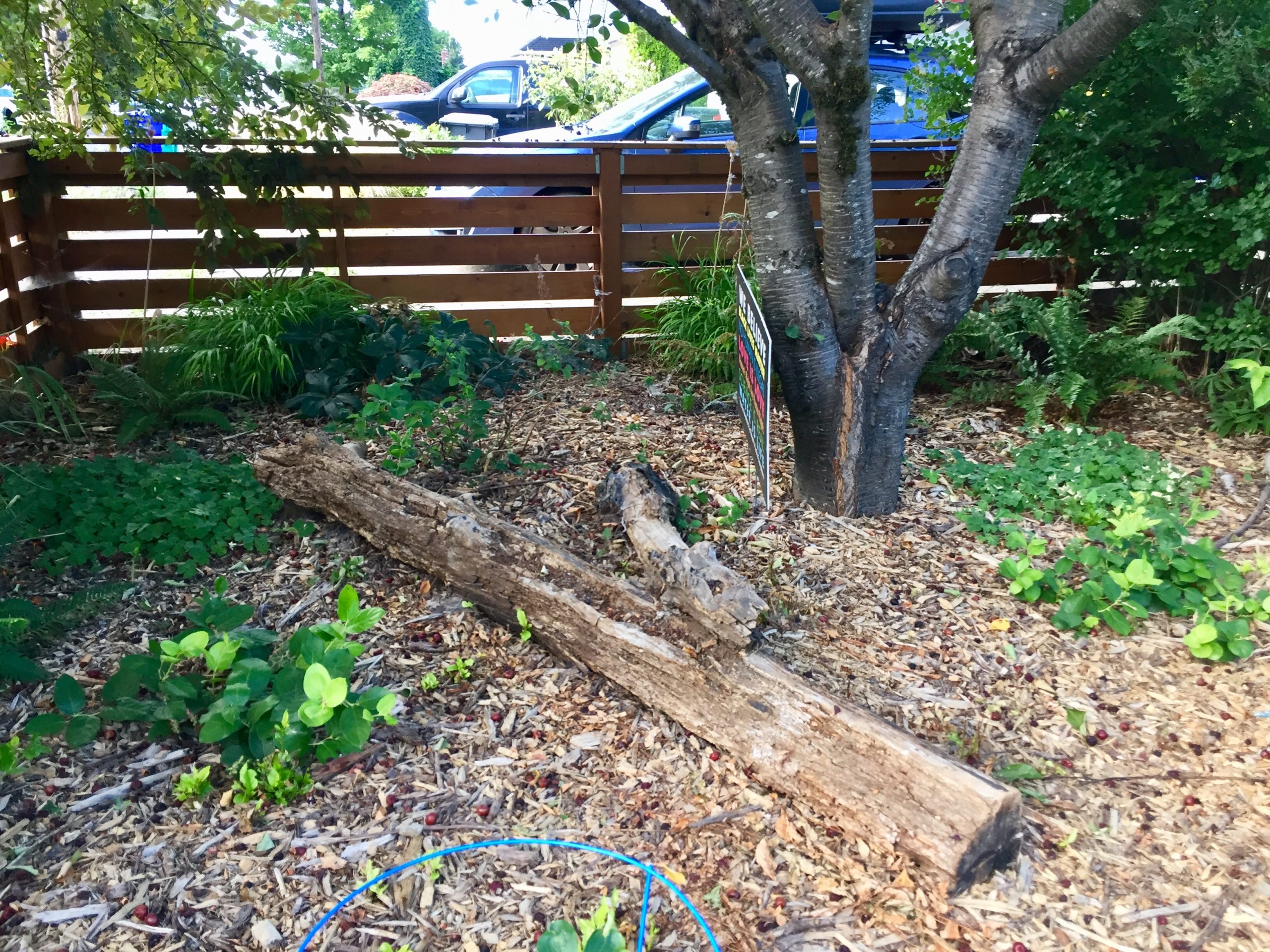
What are your top three favorite native plants and why do you love them?
So hard to choose! Salal is my all time favorite native plant. I love the waxy green leaves and am reminded of hiking in all of my favorite places anytime I see it in our yard. Second for me is Douglas Spirea. The pink flower clusters are beautiful, I love seeing the bees swarming all over them, and they always remind me of being near my favorite rivers and streams. Red twig dogwood is my third favorite as I really enjoy how much it changes throughout the year. It provides a ton of great color in the fall and winter and I love the bright, vibrant leaves and flower clusters in the summer. Ours’ is sited next to a forsythia bush and the two in the early spring are a wonderful reminder of everything that is about to blossom in the yard after a few dark, dreary, wet months.
What changes have you observed as a result of creating habitat?
The increase in birds and bees in our yard has been tremendous. We’ve had chickadees nesting in boxes for the last two years and we started seeing an increase in other bird activity almost as soon as we got rid of our grass. I keep numerous bird guides by our front window and am always looking for new ways to bring them into our yard. The bee increase has been especially pronounced. We probably has 200-300 bees in our yard at any given time during peak bloom season. The area in front of our front window is planted with Douglas Aster (native), lavender, black-eyed susan, nasturtium, Russian sage, and a Douglas Spirea (native). We can hear the bees in our living room when our the window is open, it’s amazing! Additionally, despite all of the plants, our yard is significantly less maintenance than it was with a grass lawn. I do a few days of yard work in the early spring to get things pruned and ready to grow, but otherwise, we just sit back and enjoy. And the compliments help too. I was recently harvesting cherries in our cherry tree when some neighbors walked past (without seeing me in the tree) and paused to look at the yard before declaring it an “oasis.” Needless to say, I was pumped, thanked them for the compliment with some cherries, and told them all about the program.

What were the two most significant challenges you encountered while creating habitat, and how did you address them?
Our biggest challenge in the front was eliminating a huge amount of grass. I used cardboard and multiple chip drops, but we found that it was hard to get immature plants to grow the first two years before the turf and cardboard really started to break down. Now, things grow just great, but it probably would have been best to at least turn the turf over before covering it and crossing my fingers. The other thing we have tried to really balance is watering young plants. Our yard is in the sun all day long so we have tried to both harvest rain water to supplement watering of young plants, and then find plants we know will do well without much water. We’ve paired our natives with a good number of non-native, pollinator friendly plants (Russian sage, echinacea, black-eyed susan, lavender) because they do so well in full sun. As the yard grows and expands, we’ve had an easier time creating spaces for less drought tolerant plants to thrive. In the backyard, we removed a lot of non-native, labor intensive plants and are working on either removing or creating shade for other water intensive plants. One example of this is the hydrangea that were in our yard. I love them for cut flowers and they remind me of my grandmas yard, but they really don’t do anything for our yard, and they have been planted in direct sun where they require a lot of water to keep looking good. I’m not about to water them all summer, so I planted an apple tree that is creating shade for the hydrangea and reducing their water demand. Probably better to just yank them, but this gave me a way to leave them in the ground.
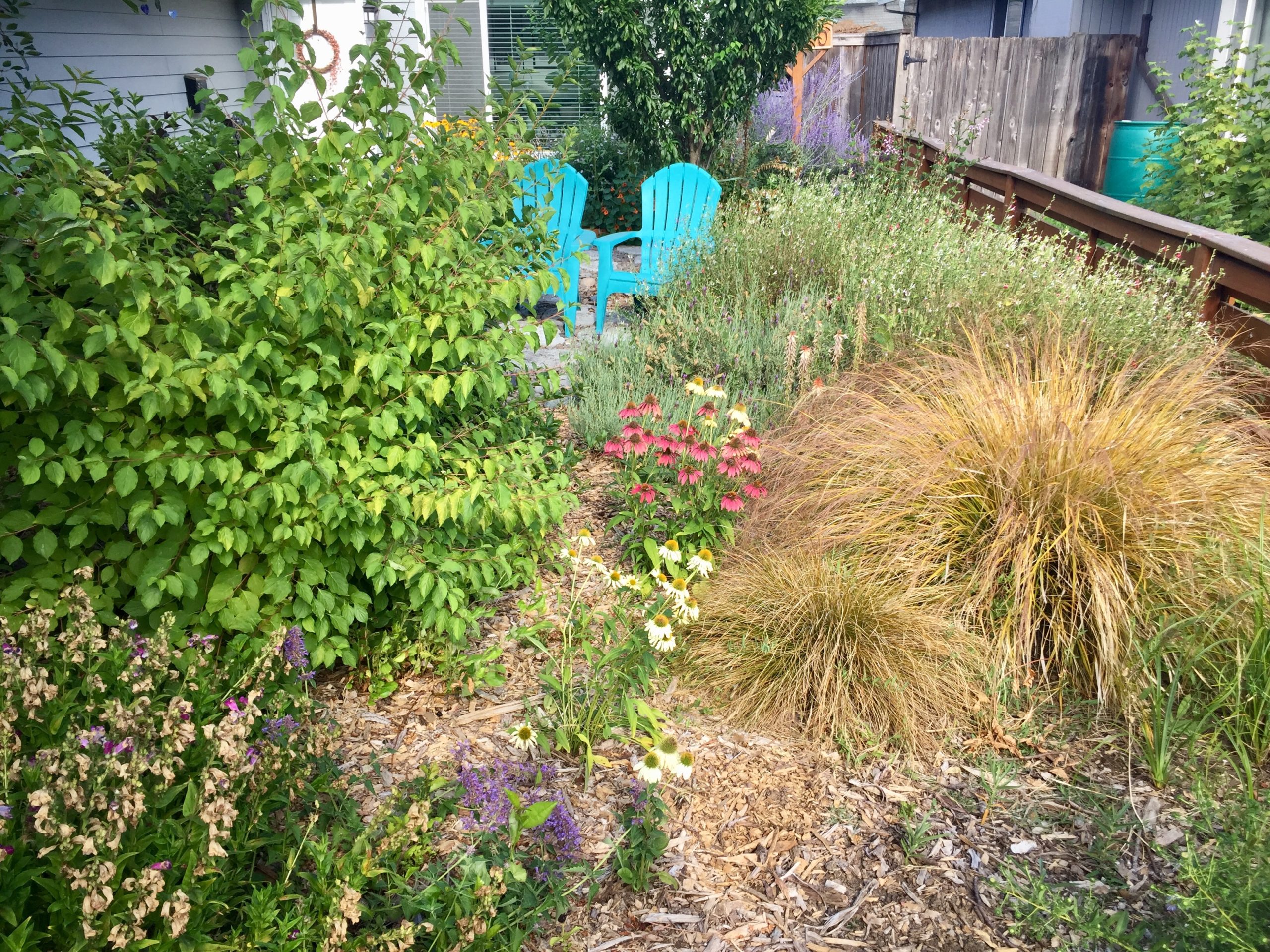
What resources did you find especially helpful?
I used every resource that the program gave me. The Rain Garden Handbook was wonderful. The native plant guide was awesome, as was/is Sparrowhawk! I used the meadowscaping handbook and loved their color coordinated chart for planting/bloom times. It was fun to go to the native plant section of local nurseries. I feel like I read, looked at, and absorbed so much, it is hard to pick just a few.
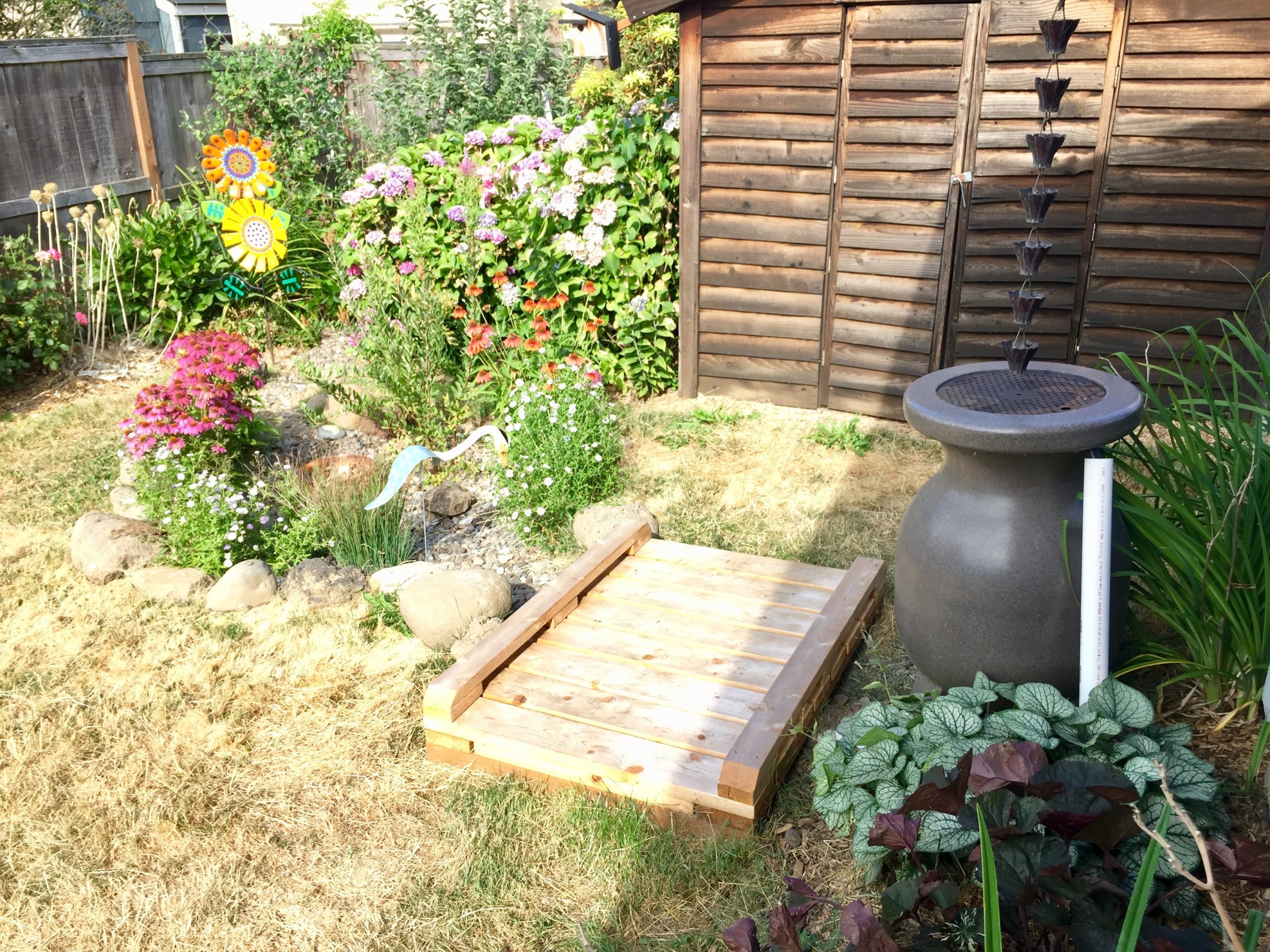
How do you enjoy your Backyard Habitat throughout the different seasons? What are its highlights in each season?
We spend a lot of time looking at our front yard and that is where we see the biggest changes throughout the seasons. When things are dormant in the winter, the rock pathway adds interest and gives us something to enjoy as the river rocks/stepping stones change colors in the rain. Early spring, everything is so green with a few fun splashes of color in our dogwood and early blooming trees and plants and then summer is incredible with color, bird and bee activity, and neighbors who like to stop by. The yard changes so much and is so much better than a green lawn, a mud pit, and then a dead lawn. Bird nesting season is also always a real treat. The birds that nest in our backyard do so in some boxes at the edge of our patio so we get to watch them go in and out all day as we hang out and eat on our picnic table.
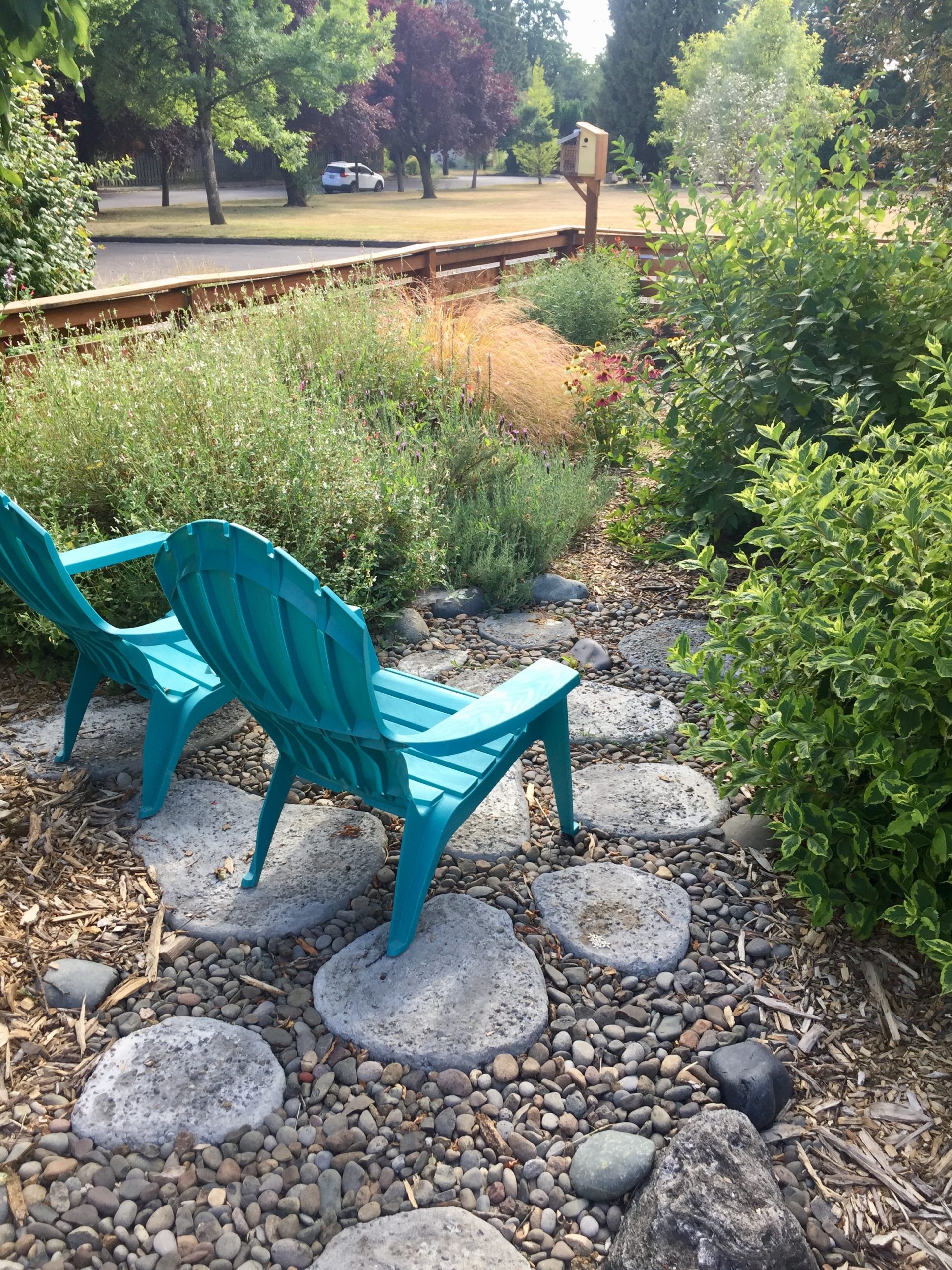
What part of your backyard habitat are you most proud of?
I am most proud of the visible increase in wildlife. We have really turned our yard into a productive, useful space and I love seeing all of the activity.
